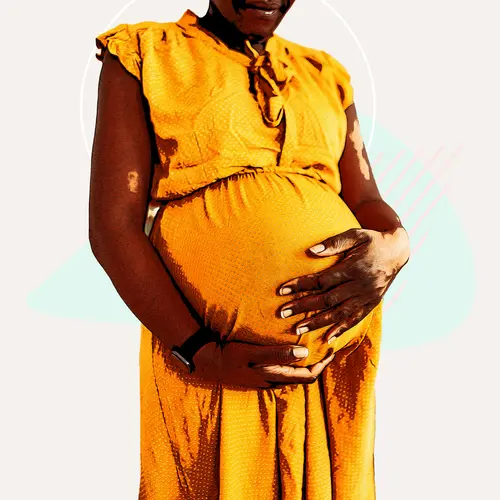Amniotic fluid embolism is a rare but serious condition that happens in pregnant women shortly before, during, or after delivery of a baby.
The symptoms of amniotic fluid embolism are often life-threatening. It's important to seek treatment, especially resuscitative treatment, as soon as possible to improve a woman's chances of survival.
What Causes Amniotic Fluid Embolism?
Amniotic fluid embolism is a rare and sudden condition. Its exact cause is unknown. For every 100,000 births, there are between 1 and 12 cases of amniotic fluid embolism.
Amniotic fluid embolism can develop in otherwise healthy pregnant women during the second trimester, natural labor, cesarean section, or up to forty-eight hours after an abnormal vaginal delivery. In some cases, it happens after a woman has an abortion via an intrauterine injection.
Because the condition is so rare, it's difficult to pinpoint the risk factors for developing it, but they may include:
- Age: Women ages 35 or older at the time of delivery may be at increased risk of amniotic fluid embolism.
- Delivery via operation: Operations like a cesarean section, forceps delivery, or vacuum extraction disturb the barriers between the mother and baby.
- Induced labor: Some methods used to induce labor may increase the risk of amniotic fluid embolism, but research on this is still limited.
- Placental abnormalities: If the placenta partly or completely covers the cervix or peels away from the uterus wall during delivery, this disturbs the barriers between mother and baby.
- Preeclampsia: This is a condition diagnosed in the late stages of pregnancy in which a woman has high blood pressure, protein in her urine, and swollen hands and feet.
- Polyhydramnios: This is a condition in which a woman has too much amniotic fluid around her baby.
What Are the Symptoms of Amniotic Fluid Embolism?
The symptoms of amniotic fluid embolism appear suddenly and include:
- Feeling out of breath
- A decrease in blood pressure
- Bleeding from the uterus
- Bleeding from the site of a cesarean incision
- Anxiety or distress
- Abnormal or slow fetal heart rate
- Chills and seizures
- Heart failure or fainting
These symptoms may be accompanied by a headache or cough, feeling sick, having chest pain, and vomiting.
Most women with amniotic fluid embolism bleed from the uterus or the site of the cesarean incision. Proteins that help the blood clot have broken down, leading to a condition called disseminated intravascular coagulation (DIC). Women with DIC can't create blood clots to stop the bleeding.
Problems with breathlessness could develop into a life-threatening condition called acute respiratory failure, in which damage to the lungs makes it difficult or impossible to breathe. Some women also experience serious heart problems like abnormal heartbeats or cardiac arrest.
Complications of amniotic fluid embolism include brain injury to the mother, death of the baby, and death of the mother. It's estimated that 20% of maternal deaths in developed countries could be caused by amniotic fluid embolism. Mothers who survive the condition may need treatment in an ICU ward for weeks or months before they get better.
What Is the Treatment for Amniotic Fluid Embolism?
Because amniotic fluid embolism is urgent and life-threatening, it's important to seek immediate treatment. The combination of treatments depends on which symptoms a woman has and may include:
- Immediate delivery. It's usually better to remove the baby from the mother's body quickly to maintain the baby's health.
- Cardiopulmonary resuscitation (CPR). If a woman is unconscious, she may be given supplemental oxygen while she's being resuscitated.
- Mechanical ventilation. If a woman has trouble with breathing, she may be put on a machine called a ventilator that helps her breathe easier.
- Pulmonary artery catheter. A thin tube can be inserted into the main artery in the lungs to help monitor blood pressure.
- Central venous catheter. A thin tube can be inserted into a big vein to deliver drugs, take blood, perform blood transfusions, and give the woman fluids.
- Blood transfusion. A woman who bleeds a lot may need a transfusion to make up for lost blood and to provide proteins that help the blood clot.
- Drugs. Drugs can be given to improve low blood pressure, heart muscle contractions, maintain the muscle tone of the uterus, and reduce the fluid that's built up around the heart or lungs.
Although most women don't survive amniotic fluid embolism, starting resuscitation early greatly improves their chances. Women who survive amniotic fluid embolism usually have neurological problems.
There's a 70% chance of the baby surviving amniotic fluid embolism. It's unknown whether women who survive the condition are at risk of having it again, but there have been cases of successful pregnancies afterward.

